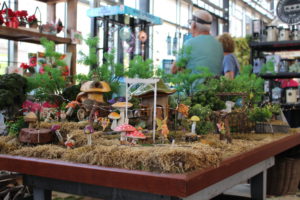Boost Sales With Live Creatures
There’s something mesmerizing about sitting next to a pond full of fish and watching them glide effortlessly through the water or seeing a turtle sitting lazily on a piece of wood just soaking up the sun. The water gardening and pond industries have experienced a strong period of growth the last few years. As people enjoy their back yards more and more, the idea of gazing into the water continues to be a profit center for retailers who are offering what customers want.
The unique nature of the water garden industry and fish, specifically, bring customers back week after week to see what new goodies have arrived in your tanks. While they are visiting, offer them dry goods and other pond-specific items they may need.
Offer The Essentials
I’m often asked, “What fish should we sell?” My reply is, “Lots of them and all of them!” Yes, it sounds like we just want to sell you more fish (and we do), but there is more to it. It doesn’t matter what fish your customers are buying as long as they are buying what they like.
The staples everyone should carry are koi and butterfly koi. They are the mainstay for most garden centers because every fish is unique and the number of varieties available is increasing every year. Koi, nishikigoi or colored carp, as they were once called, are hardy, cool-water fish and will reach a size of 24 inches on average (some grow to more than 36 inches with proper diet and a large surrounding).
There are more than 30 varieties of koi typically available, and no two are ever exactly alike.
Customers will visit your store eagerly and often for a chance to get first pick of the new shipment.
Goldfish are a great way to introduce customers to the pond industry. Many people have had goldfish as pets before in aquariums and feel comfortable starting with them. The staple fish in the industry are Sarasa Comets and Shubunkins. These elongated-body fish are fast swimmers and are more suited to outdoor pools than those more stubby-body fish that are easier prey for predators. Most goldfish rarely grow more than 8 inches long.
If your customers are starting out, show them some inexpensive 3- to 4-inch koi. If they are collectors, take them to the premium tank to pick out what they seek. Don’t let them leave without finding what they drove to your store for in the first place. If you carry a wide selection of fish sizes and prices, everyone will be happy.
Discount the remaining fish just before new ones arrive. Offer them at a discount when customers buy fish food or a filter; this boosts sales and makes customers feel like they got a good deal, and that’s what keeps them coming back!
Take It Up A Notch
Many garden centers offer a variety of “in season” items such as bull frogs, tadpoles, snails, algae eaters, turtles, etc. These items can be a bonus to your sales; however, special handling is necessary as tadpoles are very sensitive to handling, snails carry restrictions in many states and the best algae eaters (the plecostomus) require water temperatures greater than 65° F to survive.
I would recommend these items be offered as a special sale during that part of the selling season when they are best suited. For example, tadpoles may only be available for a month or so in the spring and customers mostly seek algae eaters when algae become a problem during the heat of the summer (July and August).
Turtles can be a special attraction that can bring customers in during periods of slower fish sales. They require an area to swim and one for drying off occasionally.
Maintaining Your Aquatic Center
Stocking rates of 100 3- to 4-inch fish or 50 4- to 6-inch fish in a 300-gal. holding system requires little attention and the fish hold well. Higher stocking rates are possible with closer attention. If you have the availability of abundant well water, a small amount of exchange each day in addition to filter/recirculation will reduce maintenance. Many retailers build their own systems to start. However, all-inclusive systems are available from many suppliers.
The labor to maintain an aquatic center depends on many factors. Those retailers doing the best job at it have employees with some background in fish and are enthusiastic about their work. They have systems that are user friendly and have ample water volume to hold fish. With a fish system, bigger is definitely better. The more water volume you have, the less problems occur in comparison with small systems. Think of it in terms of a can of soda dumped into a 10-gal. fish tank versus a larger koi pond. The effects on the larger body of water will be less dramatic.
Tanks and filters will need weekly cleanings. Each morning prior to opening, a quick run through should be done to be sure all systems are operating properly.
Live products take some work, but it’s worth it. You can offer products, such as unique koi, that you can guarantee nobody else has because they are one of a kind.


















 Videos
Videos





